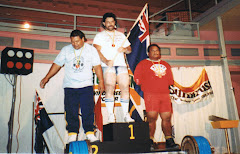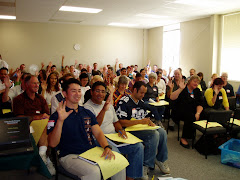
Following on from my previous blogg on conflict I wanted to write briefly about the cost of serious conflict within teams, in particular, teams that daily work together.
There are 2 specific categories of costs to teams. They are tangible and intangible costs. Let's start with the intangable.
Intangable Costs:
It is difficult to put a dollar figure on how much this costs a business in loss of productivity. I am talking about the emotional distress, headaches, ulcers, psych-somatic disorders that are directly related to the bitching, backstabbing and badmouthing that are symptomatic of a team that is imploding. Of the 2 costs mentioned my guess-timate is that the intangable elements cost an organisation far more in company dollars than the tangable & measurable costs of conflict.
The hurt and grief staff can carry around daily brought on by those they work with and the cascading effect passed onto other staff, not directly linked to the problem, create a compounding impact on the organisation as a whole.
All this stemming from 1 instance of continuing, unchastened, & poorly managed conflcit between team members. One common result is the decision of staff directly involved to limit their descretionary work effort to a minimal level, if existant at all. A loss of attitude among staff to "go the extra mile". Resulting in a minimalist approach to work, and the effort required to meet KPI's and deadlines.
Tangable Costs
These are the measureable costs. To the Financial Controller or the Line Manager, it's these costs they understand. They are able to currently monitor the direct loss of productivity or draw on the past cost of what unaddressed team conflict can cause to the business, literally in dollars.
Tangables like stress leave, absenteeisim, personal grievances, drop in productivity, loss of contracts due to poor service, health & safety. How much will you lose in dollars if you do not address the issues staff are having? Grab your calculator and add it all up and then add an additional 50% of that cost again, and still you will fall short of the actual cost of not effectively dealing with team conflict, bullying, bad-mouthing and backstabbing amongst team members.
The Solution
The combined cost of staff conflict is unacceptable to an organisation who wants to be a high performing entity. The combined loss of dollars and staff is well in excess of an accountants ability to move the decimal point further & further to the left followed by ever growing zero's. The solution will cost you dollars - but a small fraction of what the long term cost would be if you had not chosen to right the wrongs within a team.
The solution requires the following 4 steps, assuming you want to truely right the problem:
- Individual Scoping & Team Diagnosis
- Team Awareness of the Current Health Status & Committing to the Way Ahead
- Individual 1:1 Coaching to Team Commitment
- Team Review and Update of Future Agreement for Continued Synergy
This approach will take as many as 5-7 days spread over a 4-6 week period. Consistantly this approach resolves longterm conflict. Conflict that has been ingrained and fed a negative culture for years, has been resolved consistantly using this approach. Few Organisations in my opinion are truely committed to righting the inter-personal conflict that occurs in some teams and surrender to a quick-fix money saving approach rather than a "tried & proven approach" that gives lasting results.
If that's what you're looking for and you truely want a lasting approach to resolving a teams sabotaging behaviours then lets talk.




















































